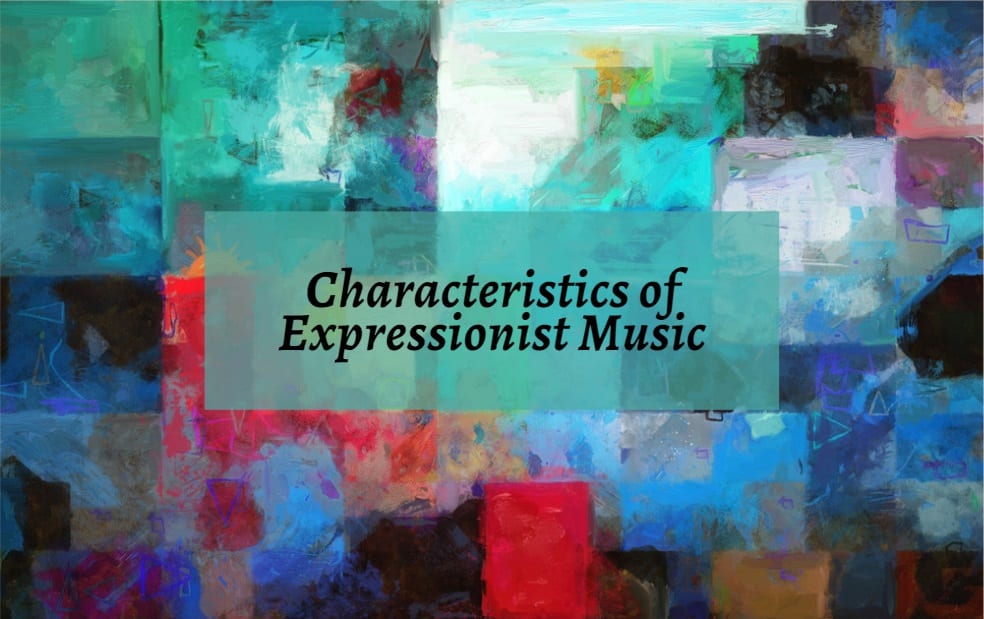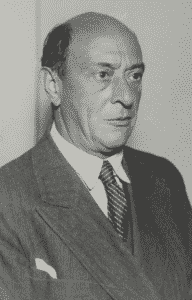
Expressionist music reflected the artistic movement that adopted the same title. This genre of art involved the distortion of shapes, images, and colours to create wildly unrealistic works of art.
The aim was to enable new forms of emotional content and expression in the work. Often the results were disturbing, otherworldly nightmarish representations of the darker side of human nature.
Artists like Edvard Munch and Wassily Kandinsky are ideal starting points to explore this genre of art.
Characteristics of Expressionist Music
To bring a little context to the discussion, the Expressionist movement is considered to have emerged from the background of Impressionism towards the very end of the 20th Century.
It carries forward into one of the most troubled decades the world ever saw with the start of the First World War in 1914.
Unrest, disputes, and social change dominated the Western World at this time and this drove the composers of the expressionist school.
Their music is not warmly romantic but dissonant, angular, and often as hard to hear as the time in which it was composed.
Certain controversial composers emerged from this time in musical history and with them came changes to music that would forever alter the sonic landscape. One such composer was Arnold Schoenberg (1874 – 1951).

Schoenberg’s early compositions were steeped in the late romantic traditions but by the early part of the 20th Century, he was already writing music that dramatically shifted away from these confines.
In Schoenberg’s Op. 11 Solo Piano pieces we hear the increasingly weakened sounds of tonality and the inclusion of greater atonal elements.
By his ‘Five Orchestral Pieces’, Op.16, (1909), Schoenberg had dispensed with tonal structures and developed his system of pitch organisation that became known as serialism.
Delving a little deeper into serialism will shed valuable light on the expressionistic realm. What Schoenberg did was give equal value to each note of the chromatic scale. This replaced the idea of a tonal centre and the prominence of tonic, dominant harmonies.
By applying Schoenberg’s methods, the entire system of ordering pitch changed. The effect of serialism is to open up radically new compositional possibilities within a highly dissonant sound world.
This revolutionary approach allowed composers to express their inner emotions in ways that defined the expressionist movement.
As expressionism took hold, the nature of musical composition twisted in unexpected directions. The languorous, luxurious lyricism of the past century dissolved.
Melodic material transformed into awkwardly sculpted shapes that leap across dissonant intervals. The chromaticism and rich harmonic textures we replaced with clusters of dense, polarized chords that agitated and disrupted.
This music was so far removed from what had gone before that it sparked considerable and heated debate. Audiences found this new music overly challenging to understand.
The often-gigantic orchestral forces were put to creative use during this period of music. What happened was that expressionist composers challenged how an orchestra, and other ensembles, should and could sound.
Exploring extremes of instrumental register was common alongside unusual groupings of instrumental families. This generated outrageous sounds from instrumentalists who often struggled to find their way through these difficult scores.
Melodies passed in fragments from one instrument or group to another like lost souls making it almost impossible to trace what was going on in a piece of music. Dynamic ranges varied to the extreme.
Sudden, surges of dark, clustered chords thundered across orchestras echoing the guns of war. The sound of music had changed forever.
From Arnold Schoenberg’s innovation was born The Second Viennese School. This was led by Schoenberg and his two fellow serialists, Anton von Webern and Alban Berg. These three composers forged ahead in similar but distinct ways.
For Webern, expressionism and the use of Schoenberg’s techniques in his work enabled him to create compositions that are austere yet crystalline in structural beauty.
Webern’s music has an almost classical clarity to it. His material is methodically and brilliantly based on the 12-tone methods yet the outcome is pure and uncluttered.
Emotions in Webern’s pieces seem to be concentrated in arching motifs that purposefully travel through the fragile landscape. If you can get passed the initial shock of atonal music, Webern’s work is in my opinion, worth the effort.
On the other side of the coin is Alban Berg. Serial techniques are in evidence in Berg’s work but the fundamental difference is that the legacy of Romanticism still resides.
I find that Berg’s music perhaps most satisfactorily encapsulates the ideals of expressionism. It plunges the ugly underneath of human experience whilst seemingly never completely abandoning hope, even spirituality.
Berg’s scores are perhaps more approachable as an entry point into expressionism and serial music. His Violin Concerto (1935) is a fine example of what I mean.
It was composed only a year before the composer’s death and is often viewed as his Requiem. Included in the final movement of the work is a Bach Chorale with variations.
It comes from Bach’s cantata ‘O Ewigkeit, du Donnerwort’, BWV. 60, (Oh Eternity, Thou Fateful Word). In this concerto, I believe Berg resolves not only the conflict of tonality and atonality but perhaps his inner turmoil too.
Maybe it is in the expressionist operas that the characteristics of the genre reveal themselves in their full glory. Through the naturally expressive qualities of the human voice comes the raw power of the movement with the expression of fear at its heart.
Bela Bartok was drawn into serial experimentation in the early operas he composed. Many of the elements of expressionism are prevalent in ‘Blue Beard’s Castle’ (1911) and ‘The Miraculous Mandarin’ (1919).
But it is once again the operas and vocal works of Schoenberg and Berg that essentially capture the essence of expressionism.
‘Pierrot Lunaire’ (1912), Op. 21, is a brilliant example of early expressionistic music.
In this piece, Schoenberg sets twenty-one poems by Albert Giraud, in three sets of seven. The ‘moonstruck’ Pierrot takes us through madness, violence, and love on a journey that exposes us to difficult human qualities.
A visit to the operas of Berg is also vital to understanding expressionism. For me, ‘Wozzeck’ (1922) by Alban Berg is an outstanding example of expressionism.
It is an intensely bleak, black account of murder and madness depicted vividly in the music and orchestration.
A further and later opera is ‘Lulu’ (left incomplete in 1937), which tells of a femme fatale’s dismal descent into destruction by Jack the Ripper. Underlying both operas are rigorous structures that look back to the works of the great Baroque composers.
Through the works of The Second Viennese School, we can all closely tread the expressionist path and maybe come to a deeper understanding of ourselves.
